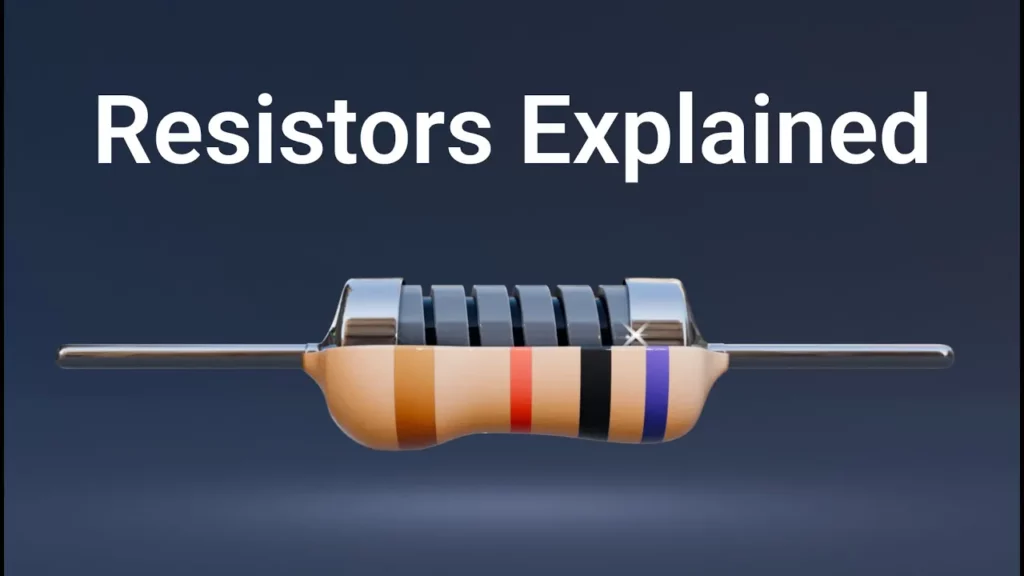Capacitors are one of the most fundamental components in electronic circuits, yet often go unnoticed. Capacitors exist in smartphones, power supplies to high-frequency applications and perform vital energy storage functions, voltage regulation and signal filtering operations.
What Is a Capacitor?
At its core, a capacitor is a device that stores electrical energy in an electric field. It consists of two conductive plates separated by an insulating material known as a dielectric. When a voltage is applied across the plates, positive and negative charges accumulate on the opposing plates, creating an electric field that allows the capacitor to store energy.
The ability of a capacitor to store charge is measured by its capacitance (C), defined by the equation:
![]()
Where:
- C – is the capacitance (in farads, F)
- Q – is the charge stored (in coulombs, C)
- V – is the voltage applied (in volts, V)
Factors Affecting Capacitance
- Plate Area – Larger plates store more charge, increasing capacitance.
- Distance Between Plates – A smaller gap between the plates increases capacitance.
- Dielectric Material – The type of dielectric used affects how much electric field is stored. Dielectrics with high permittivity, such as barium titanate, significantly enhance capacitance.
How Capacitors Work in Circuits
Capacitors don’t just store energy; they interact with circuits, Depending on whether the circuit uses direct current (DC) or alternating current (AC).
Capacitors in DC Circuits
A capacitor charges up to the applied voltage and then blocks any further current, acting like an open circuit. This makes capacitors useful for voltage regulation and power supply smoothing.
Capacitors in AC Circuits
Capacitors continuously charge and discharge as the current alternates, allowing AC signals to pass while blocking DC. They are essential in filtering and tuning applications, such as in RC filters or resonance circuits, where they help block unwanted frequencies while allowing desired ones.
The Anatomy of a Capacitor
A capacitor consists of three key components:
- Conductive Plates – These store the electrical charges, typically made of aluminium or other metals.
- Dielectric Material – This insulating layer separates the plates and influences capacitance. Materials like ceramic, plastic, or glass determine the capacitor’s performance based on their permittivity.
- Encapsulation – A protective outer coating shields the capacitor from environmental damage.
Key Functions of Capacitors in Circuits
Capacitors play a crucial role in various applications:
1. Energy Storage
Capacitors can rapidly store and discharge electrical energy, making them invaluable in applications like camera flashes, defibrillators, and backup power supplies. The amount of energy stored is given by:
![]()
Where:
- E – is energy (in joules, J),
- C – is the capacitance (in farads, F)
- V – is the voltage applied (in volts, V)
The quadratic dependence on voltage shows that even a small increase in voltage greatly enhances stored energy.
2. Voltage Regulation
Capacitors help smooth out voltage fluctuations in power supplies, ensuring a stable output for sensitive electronic components.
3. Filtering & Signal Processing
Capacitors are used in electronic filters to remove unwanted noise or AC signals while allowing desired signals to pass. This is crucial in audio systems, radio communications, and power supply circuits.
Types of Capacitors
Not all capacitors are created equal. Different types cater to different applications:
- Ceramic Capacitors – Small, inexpensive, and widely used in high-frequency circuits.
- Electrolytic Capacitors – High capacitance values, used in power supply filtering. They are polarized and must be connected correctly.
- Film Capacitors – Reliable and stable, often found in audio equipment and high-voltage applications.
- Supercapacitors – Provide extremely high capacitance and are ideal for rapid charge and discharge cycles, such as in backup power systems. Although they have lower energy density compared to batteries, they excel in delivering quick bursts of energy.
- Tantalum Capacitors – Highly reliable and compact, commonly used in aerospace, military, and medical applications.

Hassan graduated with a Master’s degree in Chemical Engineering from the University of Chester (UK). He currently works as a design engineering consultant for one of the largest engineering firms in the world along with being an associate member of the Institute of Chemical Engineers (IChemE).



